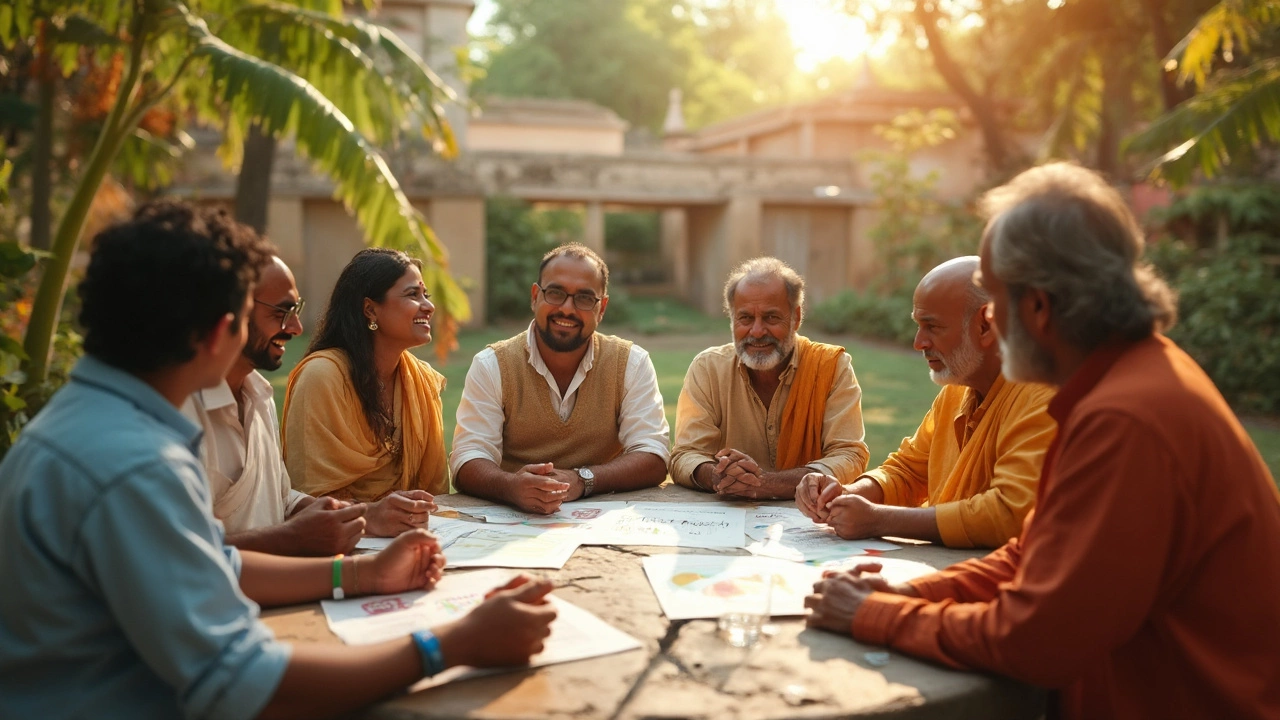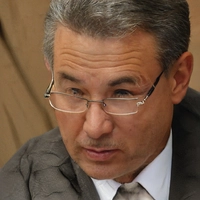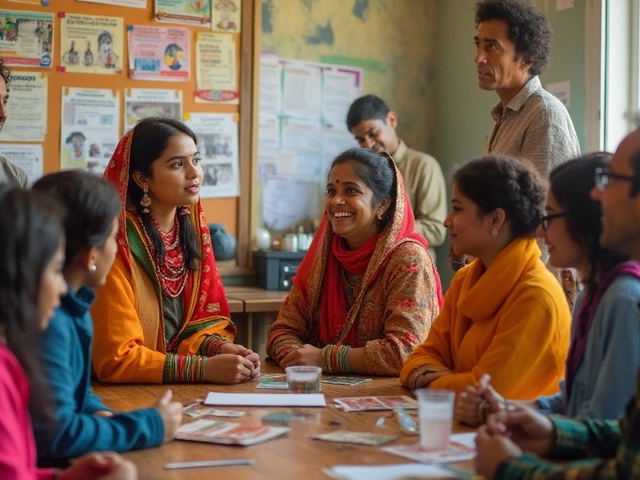Creating an outreach program that truly resonates with a community isn't just about planning a few events or sending out newsletters. It's about understanding the unique needs of your community and addressing them effectively. You might think knowing your community is a given, but you'd be surprised how many programs miss this fundamental step. Start with real conversations—whether that's through surveys, focus groups, or one-on-one chats. Collect insights from people who live there. What are their main concerns? What changes do they wish to see?
Setting clear goals comes next. Don't just set vague objectives like 'improve community health'; be specific. For instance, aim to 'increase vaccination rates by 20% in six months.' Goals should be SMART—Specific, Measurable, Achievable, Relevant, and Time-bound. This clarity not only guides your actions but also helps in measuring success down the road.
- Understanding Your Community
- Setting Clear Goals
- Building Strategic Partnerships
- Developing Engaging Content
- Effective Communication Strategies
- Evaluating Program Success
Understanding Your Community
Before diving headfirst into an outreach program, take a step back and truly understand the community you're aiming to serve. Without this knowledge, even the best-intentioned efforts can fall flat. Start by identifying the demographic and cultural makeup of the community. This sets the stage for how you'll approach communication and what kind of initiatives might succeed.
Community engagement doesn’t happen in a vacuum. Take time to explore local businesses, schools, and other institutions. Look for key influencers—those people who have the ear of the community. Engaging with these individuals early can provide vital insights and open doors to wider acceptance.
Use Surveys and Local Data
Surveys are a great starting point. Keep them short and focused, asking questions that matter most. For example, if you're planning a health initiative, pinpoint what residents feel are the biggest barriers to accessing care. Pair survey results with local data—like census figures or public health stats—to build a well-rounded picture.
Listening Sessions and Focus Groups
One method to gain richer insights is holding focus groups and listening sessions. These smaller gatherings encourage open conversations and can uncover concerns that formal surveys might miss. They're not just about asking questions—you want to genuinely listen and respond.
Mapping the Community
Consider creating a map of community assets. Identify parks, libraries, health clinics, and any other resources that play a role in community life. An asset map helps understand what's currently accessible and where there might be gaps—essential for planning meaningful interventions.
| Demographic | Percentage in Community |
|---|---|
| Age 0-14 | 20% |
| Age 15-24 | 10% |
| Age 25-64 | 50% |
| Age 65+ | 20% |
Once you've gathered all this information, analyze it to identify trends and common themes. The more detailed your understanding, the better equipped you'll be to design a community outreach strategy that truly hits home.
Setting Clear Goals
Setting clear goals is crucial for any successful outreach program. Think of these goals as your roadmap. Without them, you're just wandering. A good goal is like giving your program a GPS coordinate, guiding every action and decision. So, how do we get it right?
Make Goals SMART
You've probably heard of SMART goals, right? They're your go-to strategy:
- Specific: Be crystal clear about what you want to achieve. Instead of saying 'involve more community members,' aim for 'increase community event attendance by 25% over six months.'
- Measurable: Use numbers to measure your success. This way, you'll know exactly where you stand.
- Achievable: Set challenging yet attainable goals. Don't overreach and risk burnout.
- Relevant: Ensure your goals align with the community's needs. This keeps everyone motivated.
- Time-bound: Set a deadline. Without it, goals tend to drag on indefinitely.
Align Goals with Community Needs
Remember, your community outreach efforts should address real needs. Engage in dialogue with community members and consider their feedback when setting objectives. Keeping a pulse on local priorities ensures your goals remain relevant and meaningful.
Examples of Clear Goals
Here's a quick list of realistic goals you might set for your outreach program:
- Increase local business engagement by 15% in a year.
- Expand volunteer participation in community clean-ups by 30% in six months.
- Reduce neighborhood crime rates by 10% within a year through collaborative efforts with local law enforcement.
Tracking Progress
Tracking progress is just as important as setting goals. Regularly assess where your program stands versus your targets. Use tools like surveys, feedback forms, and participation stats.
In 2024, a study revealed that outreach programs with clear, specific goals were 75% more likely to achieve desired outcomes. The numbers don't lie, and neither do focused objectives.
Setting up a successful outreach starts with the right goals. Make sure they're clear, focused, and aligned with the community's voice.
Building Strategic Partnerships
When it comes to crafting a successful outreach program, building the right partnerships is key. These strategic partnerships can provide resources, expand your reach, and lend credibility to your initiatives. So, how do you go about it?
Identify Potential Partners
First off, look around you. Partners can come from a variety of places—think local businesses, non-profits, schools, and even influencers who care about the cause. The goal is to find partners whose missions align with yours, boosting the effectiveness of your outreach program.
Approaching Prospective Partners
Once you have a list of potential partners, it's time to make your move. Start by reaching out with a clear proposal. Tell them why partnering with you is beneficial. Maybe you offer access to a new audience, or perhaps your program aligns with their corporate social responsibility goals.
What to Include in Your Proposal
- Mission Alignment: Explain how your goals complement each other.
- Benefits: What do they stand to gain? Highlight mutual advantages.
- Commitment: Specify what you're asking from them.
Be prepared to negotiate terms and show flexibility. Genuine partnerships require give and take.
Maintaining the Relationship
Building a collaboration is just the start. Maintain regular communication to ensure that both sides are meeting their commitments and benefiting from the arrangement. Consider regular check-ins or joint evaluations to keep the partnership healthy.
Real-World Example
A great example is how some community health programs partner with local hospitals to provide free screenings. The hospital gains community goodwill and foot traffic, while the program benefits from professional expertise and credibility.
Building these relationships doesn't just happen overnight—it requires effort, communication, and a little mutual respect. But when done right, these partnerships can take your community outreach efforts to the next level.

Developing Engaging Content
Crafting content that grabs people's attention is a big part of a successful outreach program. It starts with knowing what gets your community talking. Are they active on social media, or do they prefer in-person discussions? Think about how you can tailor your content to fit these preferences.
Speak Their Language
One key tip: skip the jargon. Your message should be clear and easy to understand, whether it's in a flyer or a Facebook post. As Albert Einstein reportedly said,
"If you can't explain it to a six-year-old, you don't understand it yourself."Obviously, he wasn't talking about outreach content, but the principle still applies. Simplify complex ideas, and you’re more likely to connect with more people.
Mix It Up
Keep things exciting by varying the types of content you use. A mix of videos, infographics, and written content keeps your audience engaged. Plus, different people absorb information in different ways. Some folks might love a good infographic that breaks down community health stats, while others might be drawn to a heartfelt video story.
Leverage Local Influences
Another way to boost engagement is getting local leaders involved. If a community leader shares your content, it's more likely to be trusted and heard. These individuals already have the community's ear, so why not use their voice to amplify your message?
| Content Type | Engagement Rate |
|---|---|
| Videos | 85% |
| Infographics | 70% |
| Written Articles | 65% |
Finally, don't forget to ask for feedback. Encouraging community members to share their thoughts or page impressions on what they find valuable can provide insights for refining your approach. When you involve people in shaping the content, they're more likely to stay engaged.
Effective Communication Strategies
Crafting an effective communication strategy is essential for any outreach program. It's the bridge between your goals and community engagement. Here’s where the rubber meets the road—where your ideas become action.
Know Your Audience
The first step is to know who you're talking to. Different communities respond to different communication styles. A younger audience might engage more through social media platforms, while older community members might prefer face-to-face meetings or newsletters. Tailoring your message to fit your audience is crucial.
Use Multiple Channels
Diversifying your communication methods can ensure a wider reach. You might want to use:
- Social media for instant updates and engagement.
- Email newsletters for detailed information.
- Community meetings or town halls for direct interaction.
- Local media outlets for announcements and features.
"Communication works for those who work at it." – John Powell
Keep It Clear and Consistent
Nobody likes mixed messages. Keep your messaging consistent across all platforms. Have a solid plan for what, when, and how you'll communicate. This helps in building trust and reliability.
The Power of Feedback
Communication shouldn't be a one-way street. Encourage community input. Conduct polls or simple surveys to get feedback on your outreach efforts. It not only makes the community feel involved but also provides valuable insights for improvement.
Here's a quick look at communication preferences gathered from a recent local survey:
| Method | Preferred by (%) |
|---|---|
| Social Media | 45% |
| Emails | 30% |
| Community Meetings | 15% |
| Local Media | 10% |
Measure Your Success
Always track the effectiveness of your communication strategies. Use analytics to gauge the reach and impact of each channel. Adjust your plan based on what’s working. Remember, an outreach program is a living entity; it evolves as the community’s needs change.
Evaluating Program Success
Once your outreach program is up and running, how do you know if it's hitting the mark? Evaluating success isn't just about numbers; it's about understanding the impact you've made. Start by revisiting your goals. If you aimed to increase community engagement, what's the tell-tale sign of progress? Increased attendance at events, more volunteers, or perhaps, a higher social media following?
Community engagement surveys can be super helpful here. Send out quick, easy surveys to participants to gather feedback. Ask them if they feel the program is valuable, what they enjoyed, and what could improve. Their insights are gold!
Tracking Key Metrics
Metrics are your best friend here. Look at both quantitative and qualitative data. Quantitative metrics include attendance numbers, website traffic, or social media interactions. Qualitatively, pay attention to stories and testimonials from community members. Sometimes, a single powerful story can tell you more than statistics alone.
Using Data Effectively
It's important to take both a bird’s-eye view and a close-up look when assessing data. For instance, if your goal was to boost vaccination rates, compare pre- and post-program numbers. If you had a 15% increase, that's worth celebrating! And if not, dig deeper to understand why.
Adjusting the Program
Evaluation isn't a one-time job; it's ongoing. Based on what you learn, adjust the program. Maybe your outreach needs more time during weekends, or more engaging online content. Flexibility is key. The ability to tweak and improve will keep your program not just successful but relevant to the community.





